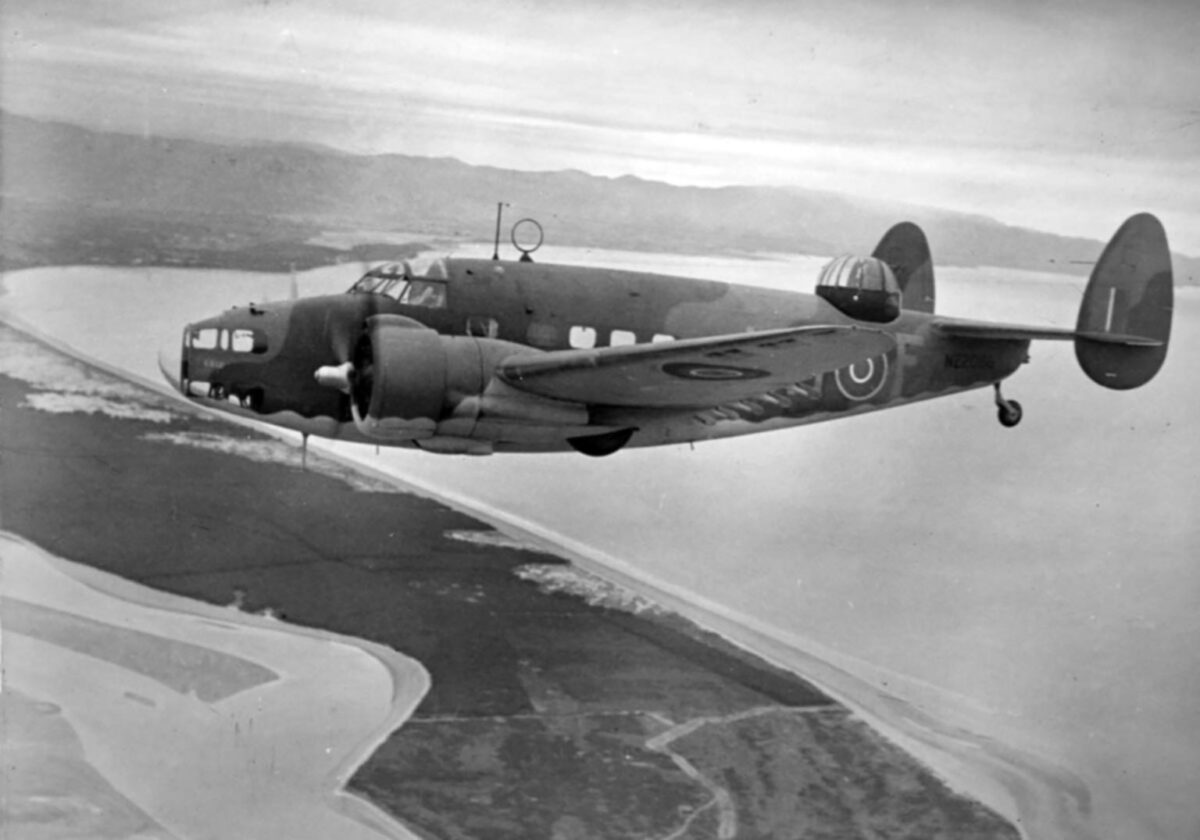New Zealand two-engine bomber Lockheed Hudson IIIA (New Zealand Air Force serial number – NZ2066, airborne – UH-F, manufactured at the Hobsonville military plant in the USA in 1942) in flight. Pacific Theater of Operations, World War II.
This bomber went missing on August 20, 1944 while flying from Fiji to Winuapai, New Zealand.
The Lockheed Hudson was an American light bomber and anti-submarine aircraft originally commissioned by the Royal Air Force (UK) shortly before the outbreak of World War II and serving primarily with the RAF.
Lockheed Hudson was the first significant contract for the Lockheed Aircraft Corporation – the RAF’s initial order for 200 aircraft far exceeded all of the firm’s previous orders.
The bombers served throughout the war primarily in the Coast Guard, as well as in a transport and trainer role. The aircraft also carried out the delivery of agents to occupied France.
Hudson bombers were also used extensively by the anti-submarine squadrons of the Royal Canadian Air Force and the Royal Australian Air Force.
By the outbreak of World War II in September 1939, the RAF had 78 of the Lockheed Hudson bombers in service. After the outbreak of the war, due to the neutrality of the United States, aircraft were flown to the Canadian-American border and towed over the ground across the border into Canada by tractors or horses to Canadian Air Force airfields. Then the planes were loaded onto ships and delivered to Liverpool. The bombers were delivered without the Boulton Paul top turret, which was installed when the aircraft arrived in the United Kingdom.
Although this aircraft was later eclipsed by larger bombers, the Lockheed Hudson made some significant progress during the first half of the war. On October 8, 1939 over Jutland, the Lockheed Hudson became the first Allied aircraft operating from the British Isles to shoot down an enemy aircraft (the earlier victories of the Fairey Battle on September 20, 1939 and the Blackburn Skua on September 26, 1939 were won respectively from an airfield in France and from aircraft carrier decks). Lockheed Hudson bombers also provided air cover during the Battle of Dunkirk.
